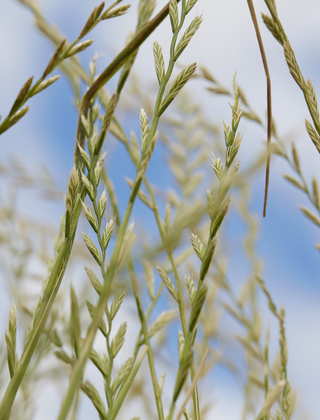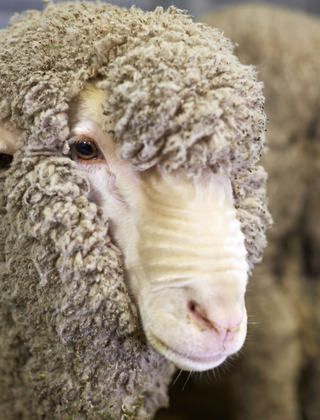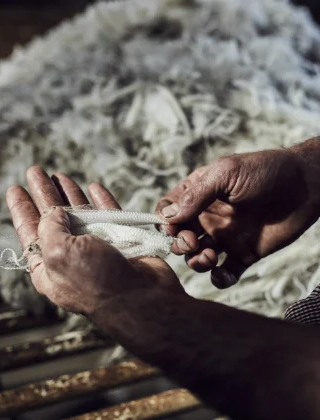Lifetime Ewe Management
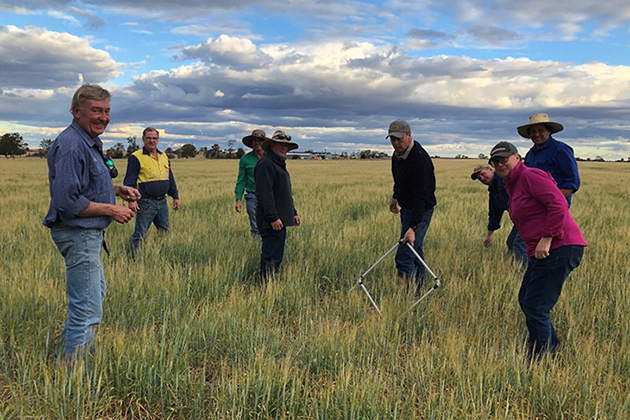
After a forced hiatus in Queensland due to drought, declining sheep numbers and the impact of wild dogs, interest in AWI’s flagship producer extension program Lifetime Ewe Management (LTEM) is growing within the state.
LTEM deliverer Geoff Duddy with group members Ross Brown (Meandarra), Phillip Coggan (Westmar), Murray Lillecrapp (Toobeah, since replaced by Stephen Brown), Dugald Cameron (Bollon), John Allen (Toobeah), Di Parsons (St George) and Will Rae (Toobeah).
After a forced hiatus in Queensland due to drought, declining sheep numbers and the impact of wild dogs, interest in AWI’s flagship producer extension program Lifetime Ewe Management (LTEM) is growing within the state.
What is Lifetime Ewe Management?
The Lifetime Ewe Management (LTEM) course, supported by AWI across Australia, aims to increase producers’ understanding of the influence of ewe nutrition and management on overall reproduction rates and lamb and ewe survival. Producers develop the skills to manage their ewes to achieve condition score targets and explore the economics of supplementary feeding and pasture management to review stocking rates.
LTEM groups meet six times in the annual sheep calendar during a period of 12 months. The course is very hands-on, being based in the sheep yards, shearing sheds and paddocks of participating woolgrowers, which enables participants to share and learn from one another.
More information: For more information, or to set up or join an LTEM group in your local area, call RIST on freecall 1800 883 343 or visit www.rist.edu.au/lifetime-ewe-management
AWI: www.wool.com/LTEM
A new seven-member LTEM group has recently started in south-western Queensland. The producers collectively manage more than 65,000 hectares, have an average stocking rate of one breeding ewe per six hectares and predominantly run self- replacing Merino operations with culls/CFA joined to Terminals.
Many of the members have undertaken exclusion fencing to reduce wild dog impacts, with most experiencing major losses prior to doing so. All members are looking to increase breeding ewe numbers.
Di Parsons instigated the development of the group. Di and husband Andrew relocated from Forbes, NSW, at the beginning of 2019. While they are currently focused on developing/fencing their property, they are keen to ensure they ‘get the basics right’.
Taking on the role as group coordinator for the LTEM project, Di said they are looking forward to the AWI- supported project helping them to improve ewe management, increase weaning rates, efficiently utilise their pastures for quality and nutrition, improve feed budgeting and be part of a like-minded self-mentoring group of farmers. The course also revisits the basics of ewe management and ensures that they are not dropping the ball.
“LTEM is a great way to meet other farmers who are also keen to mentor and learn from each other and have similar interests. All our friends that have done the course are really happy with the outcomes,” she said.
Di is really enjoying the group interaction and accountability at each group meeting. The tools and skills she has learnt from the program are being readily implemented into their livestock management program. She also highly values the many tips and local knowledge she has been given by other group members which have helped them adapt quickly to their new farm.
Group member Ross Brown ‘Belmont Park’ runs a mixed-farming operation with wife Cheryl. They are looking to significantly increase their sheep flock after a string of poor seasons and wild dog issues.
“We have invested heavily in improving our infrastructure in the past few years. This has included exclusion fencing of our properties, building a new multi-purpose shearing/machinery shed and a new set of working yards with shade across the entire working race area,” Ross said.
“We are looking to run a minimal management, more ‘bang for your buck’ operation that produces wool and sheepmeat ethically, efficiently and economically. LTEM is the perfect fit for our operation and I particularly enjoy the group dynamics and discussions during each bi-monthly workshop session.
“The importance of actively condition scoring throughout the breeding ewe’s production cycle and how to meet her feed needs from existing pasture and/or supplements has been well explained and easy to implement.”
The LTEM group’s deliverer, consultant Geoff Duddy of Sheep Solutions, believes there is capacity for at least eight to 10 LTEM producer groups, stretching from Longreach to the southern border.
“I’ve been looking to establish several Queensland groups since moving from southern NSW to Queensland a few years ago and now that most of the state has finally got a break from the drought, with exclusion fencing and interest in the sheep industry booming, it is an opportune time for producers to fine-tune their management through programs such as Lifetime Ewe Management,” Geoff said.
Much of the LTEM program is geared towards breeding up the Merino ewe base, and Mr Duddy believes Queensland has “a huge potential, particularly now”.
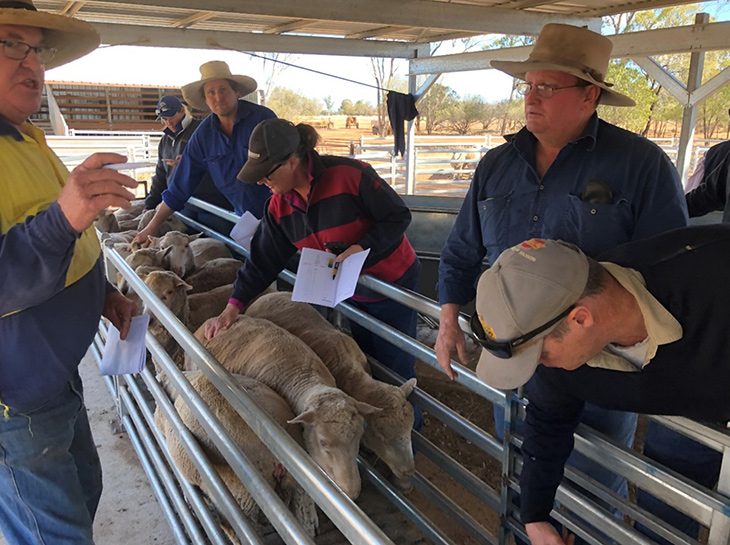
Group member Ross Brown (left) outlining their family-run operation to other members during a condition scoring training session on ‘Belmont Park’.
“Over time there has been a swing away from sheep in Queensland due to dogs and drought, so we’ve seen a dwindling flock number as well,” he said.
“However, while much of the LTEM recommendations originated from southern trial and extension work, most LTEM principles and management recommendations can be implemented in western or pastoral areas.
“Of the 18 LTEM groups I’ve coordinated, several were within south western NSW’s pastoral zone, and I’ve also been part of an AWI working group further developing and fine-tuning principles for these regions. I’m keen to incorporate recommendations and practices that suit Queensland conditions and management calendars.”
High on the list of management practices that Mr Duddy would like to see further develop within Queensland is the strategic supplementary feeding of ewes and, if proving to be cost beneficial, grain- finishing stock.
“Most producers I’ve come across in Queensland would first and foremost in a drought drop back on their numbers or they may destock completely – very few have actually fed. However, many are now seeing the benefit of feeding to help maintain their core breeding ewe base, improving reproduction rates, lamb survival and ewe and lamb productivity, with most producers investing in on-farm storage and machinery to help them do so.
“LTEM not only helps with day-to-day sheep management decision making but helps producers to understand what drives productivity – nutrition!”
“I love delivering LTEM. I love the interaction between participants and seeing their development. It is by far one of the best extension models available to sheep producers nationally today.”
AWI Change Makers: Ewe condition scoring
AWI recently issued a short video about ewe conditions scoring, as the fourth episode in its AWI Change Makers initiative.
Condition score can tell you so much about your sheep and their performance, and is simply done by hand, measuring the fat and muscle cover over and around the short ribs. Watch the 4½ minute video of livestock consultant Nathan Scott as he outlines the benefits of recording and managing
ewe condition scores to target, practical management tips and expected productivity gains.
The AWI Change Makers initiative communicates research findings to woolgrowers to help them implement best practice in their flocks. Other episodes include:
- Lambing mob size
- Weaning to manage
- Ram performance management
- Joining time and length.
View the videos at www.wool.com/awichangemakers
This article appeared in the March 2021 edition of AWI’s Beyond the Bale magazine. Reproduction of the article is encouraged, however prior permission must be obtained from the Editor.






